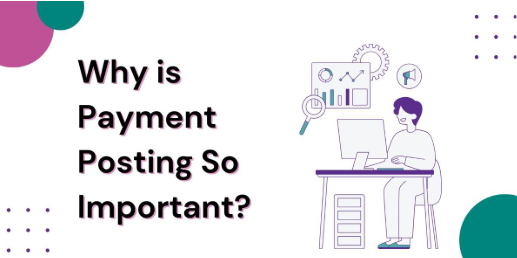Picture this: You’ve just finished treating a patient who walked out pain-free after weeks of chronic back issues. You’ve documented everything perfectly, submitted the claim, and then… silence. Three weeks later, you get a denial for “medical necessity not established.” Sound familiar?
If you’re running a chiropractic practice in 2025, you’re probably dealing with more billing headaches than ever before. Insurance companies are tightening their review processes, AI is screening claims before human eyes ever see them, and one small coding error can turn a $150 adjustment into a $0 payment.
The good news? Understanding the evolving landscape of chiropractic billing can dramatically improve your cash flow. Let’s dive into what’s working in 2025, what’s causing denials, and how smart practices are leveraging technology to get paid faster.
Top Chiropractic CPT Codes in 2025: Your Revenue Drivers
Why are chiropractors struggling with CPT code selection?
The answer lies in specificity. Insurance companies are demanding more detailed documentation that matches precise CPT codes. Here are the codes that successful practices are using most effectively:
Primary Treatment Codes:
- 98940 – Chiropractic manipulative treatment (CMT); spinal, 1-2 regions
- 98941 – CMT; spinal, 3-4 regions
- 98942 – CMT; spinal, 5 regions
- 98943 – CMT; extraspinal, 1 or more regions
Supporting Service Codes:
- 97140 – Manual therapy techniques (mobilization/manipulation)
- 97110 – Therapeutic exercise
- 97112 – Neuromuscular reeducation
- 97124 – Massage therapy
Key ICD-10 Pairings That Get Approved:
- M54.5 (Low back pain) with 98940/98941
- M25.511 (Right shoulder pain) with 98943
- M43.6 (Torticollis) with 98940
- S13.4XXA (Sprain of ligaments of cervical spine, initial encounter) with 98940
The critical insight for 2025: Pair your most specific ICD-10 code with the appropriate CPT code and document the medical necessity clearly. Vague diagnoses like “back pain” are getting flagged by AI screening systems.
Biggest Denial Triggers: What’s Killing Your Claims in 2025
Common chiropractic claim denials are hitting practices hard. Here’s what’s causing them:
1. Missing or Incorrect AT Modifier The AT modifier indicates that acute treatment is being provided. Without it, many insurers assume you’re providing maintenance care, which they won’t cover. Always append AT to your CMT codes when treating acute conditions.
2. Overuse of Modifier 59 Modifier 59 indicates a distinct procedural service, but it’s being audited heavily. Only use it when you’re truly performing separate, non-bundled services. Misuse triggers automatic reviews.
3. Frequency Red Flags Treating the same patient daily for weeks without showing functional improvement is a denial magnet. Document objective measures like pain scales, range of motion improvements, and functional goals.
4. Duplicate Claims This seems obvious, but electronic submission errors are creating duplicate claims that get auto-denied. Implement claim tracking to prevent resubmissions.
5. Medical Necessity Documentation Simply stating “patient has back pain” isn’t enough. You need to document:
- Specific pain levels and functional limitations
- How chiropractic care addresses the condition
- Expected treatment duration and goals
- Objective findings from examination
How to Submit Clean Chiropractic Claims: A Step-by-Step Guide
Clean claim submission is your ticket to faster payments and fewer headaches. Here’s what works:
Pre-Treatment Verification:
- Verify patient insurance eligibility and benefits
- Confirm chiropractic coverage limits and copays
- Check for pre-authorization requirements
- Document any previous chiropractic care history
Documentation Best Practices:
- Use objective measurements (pain scale 1-10, range of motion degrees)
- Link examination findings to treatment provided
- Note functional improvements or lack thereof
- Include relevant patient history and mechanism of injury
Coding Accuracy:
- Match ICD-10 codes to examination findings
- Use the most specific CPT codes available
- Apply modifiers correctly (AT, 59, 25)
- Bundle appropriately to avoid unbundling denials
Electronic Submission Optimization:
- Use clearinghouses that provide real-time claim validation
- Implement claim scrubbing software to catch errors before submission
- Track claims through the entire revenue cycle
- Set up automated denial alerts
New in 2025: How AI is Changing Chiropractic Billing
AI in chiropractic billing isn’t just a buzzword anymore—it’s reshaping how claims get processed and paid.
Payer-Side AI Screening: Insurance companies are using AI to screen claims before human review. These systems flag:
- Unusual billing patterns
- High-frequency treatments without documented improvement
- Mismatched diagnosis and treatment codes
- Statistical outliers in treatment duration
Practice-Side AI Solutions: Smart practices are fighting fire with fire, using AI to:
- Predict claim denial likelihood before submission
- Suggest optimal CPT and ICD-10 code combinations
- Identify documentation gaps that trigger denials
- Automate prior authorization requests
EHR Integration Improvements: Modern EHR systems are integrating AI-powered billing features that:
- Auto-populate codes based on documentation
- Flag potential compliance issues
- Streamline the appeals process
- Provide real-time eligibility verification
The key is choosing technology that integrates seamlessly with your existing chiropractic revenue cycle management system.
When to Outsource Your Billing & How to Audit Performance
Should you outsource your chiropractic billing?
Consider outsourcing if you’re experiencing:
- Denial rates above 10%
- Days in A/R exceeding 30 days
- Staff spending more than 40% of time on billing tasks
- Difficulty keeping up with coding updates
What to Look for in a Billing Partner:
- Chiropractic-specific experience
- Transparent reporting and KPI tracking
- Real-time access to claim status
- Compliance with HIPAA and industry standards
- Technology integration capabilities
Key Performance Indicators to Monitor:
- Clean claim rate (should be >95%)
- First-pass resolution rate
- Days in accounts receivable
- Denial rate by payer
- Collection rate percentage
Monthly Billing Audit Checklist:
- Review denial patterns and root causes
- Analyze payer mix and reimbursement rates
- Check coding accuracy and compliance
- Evaluate staff productivity metrics
- Assess technology utilization and ROI
Frequently Asked Questions
Q: What’s the most important modifier for chiropractors in 2025? A: The AT modifier remains crucial for indicating acute treatment. Without it, insurers often classify treatments as maintenance care, leading to denials.
Q: How often should I bill the same CPT code for one patient? A: This depends on medical necessity and payer guidelines. Document functional improvements and have clear treatment goals. Most insurers allow 12-20 visits per episode of care with proper documentation.
Q: Can AI really improve my billing accuracy? A: Yes, AI tools can catch coding errors, predict denials, and optimize code selection based on documentation. However, they’re tools to supplement, not replace, proper clinical documentation.
Q: What’s the biggest mistake chiropractors make with billing? A: Inadequate documentation of medical necessity. You must clearly link your examination findings to the treatment provided and document functional improvements.
Taking Action: Your Next Steps
The chiropractic billing landscape in 2025 rewards practices that embrace precision, technology, and proactive management. Whether you’re handling billing in-house or considering outsourcing, focus on these fundamentals:
- Invest in staff training on current CPT codes and modifier usage
- Implement technology solutions that catch errors before submission
- Document medical necessity with objective, measurable criteria
- Monitor your metrics monthly and adjust processes accordingly
- Consider professional billing services if your denial rates exceed industry benchmarks
Remember, every denied claim costs you twice—once in lost revenue and again in the time spent on appeals. By staying current with billing best practices and leveraging the right technology, you can focus on what you do best: helping patients achieve optimal health.
For practices ready to take their billing to the next level, Malakos Healthcare Solutions chiropractic billing services offers specialized expertise in chiropractic revenue cycle management, helping practices achieve cleaner claims and faster payments.
Your patients depend on you for their health. Make sure your billing system isn’t compromising your ability to serve them—or your bottom line.









